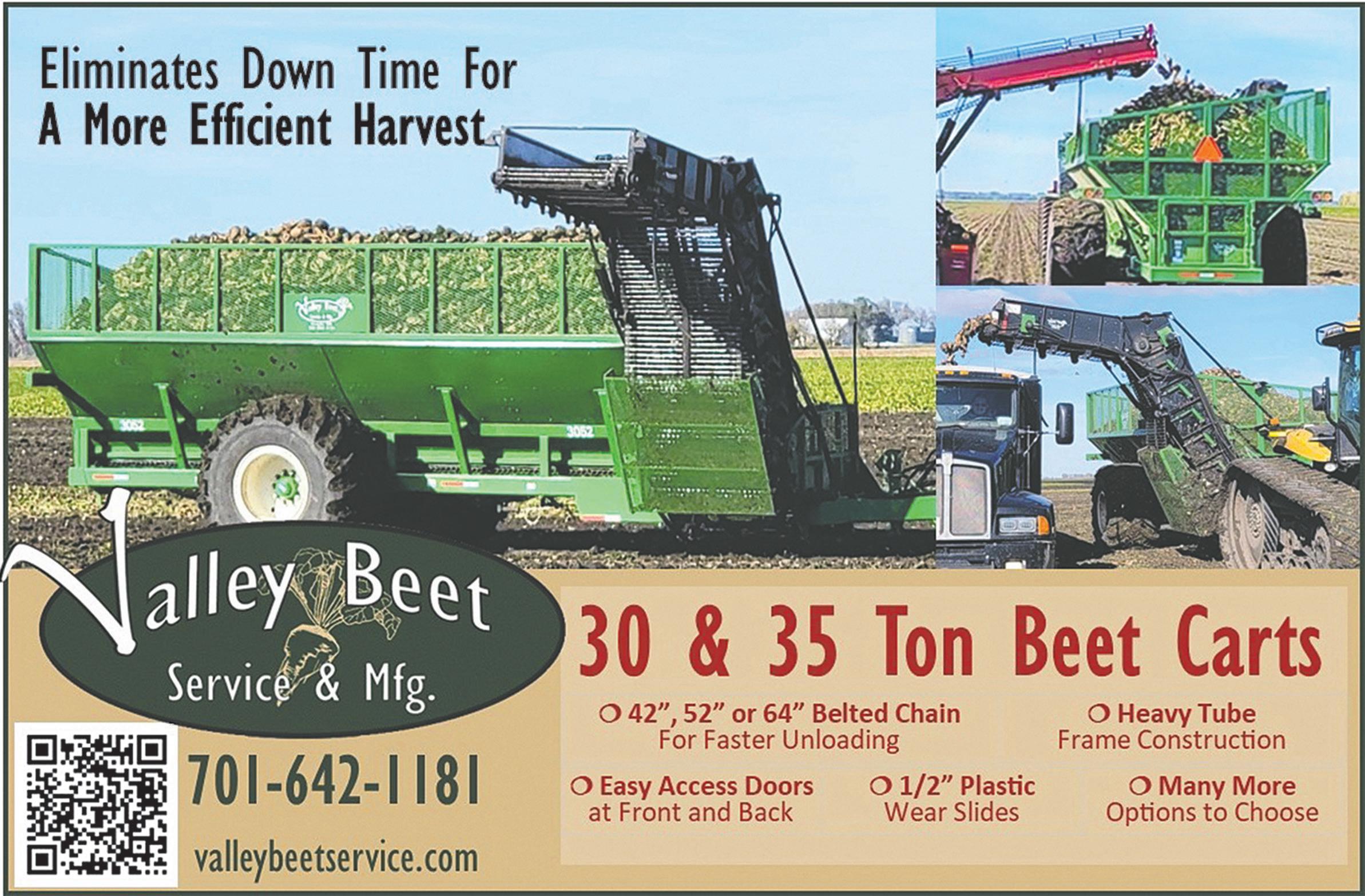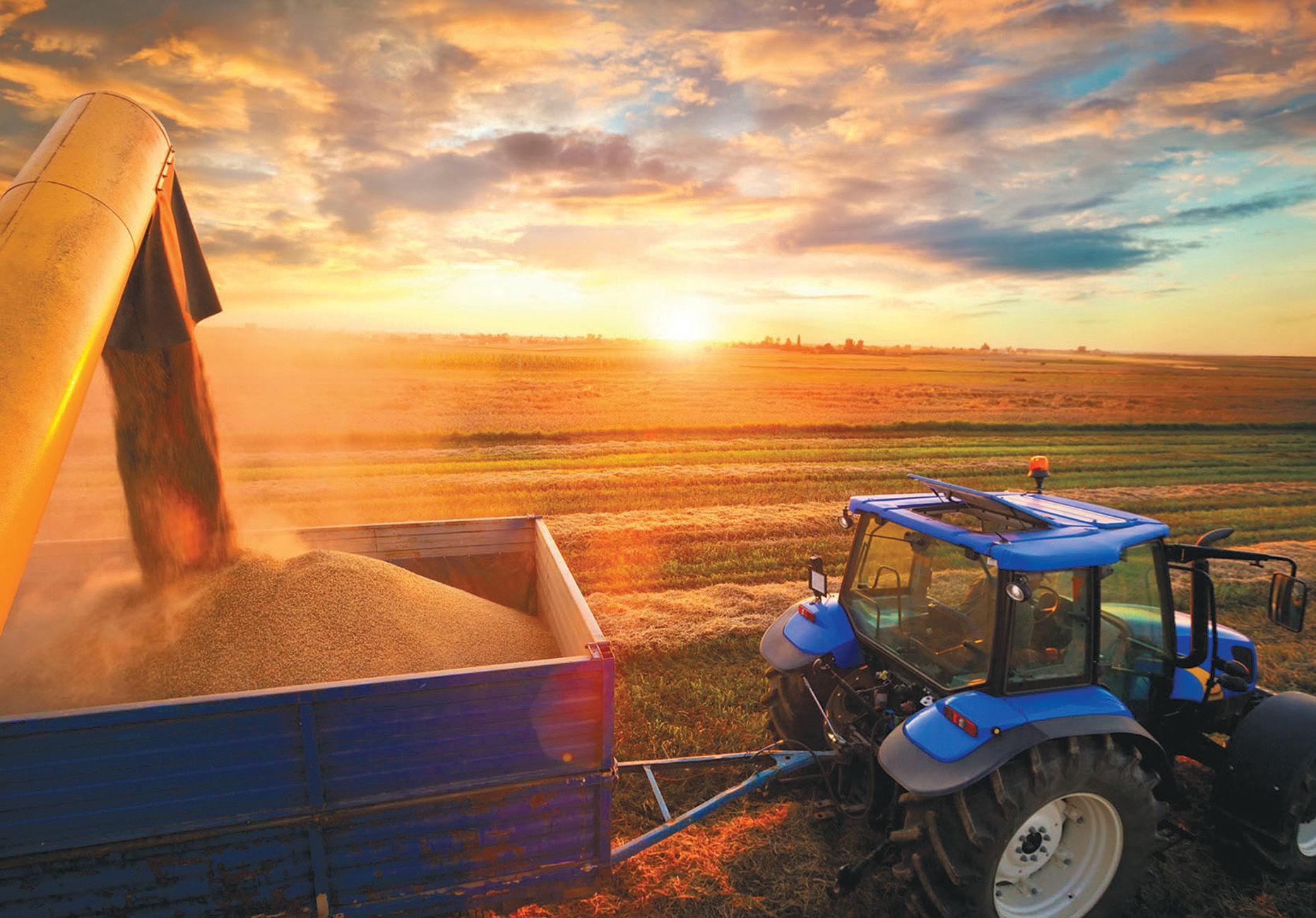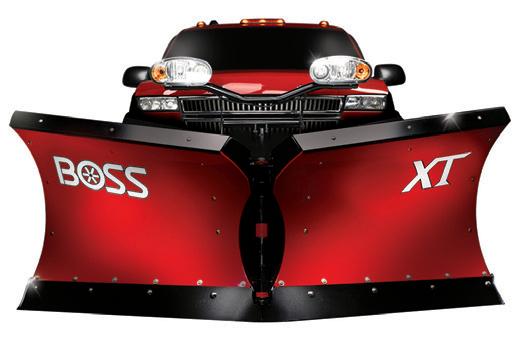
3 minute read
RETHINK BALANCED CROP NUTRITION
by agweek
It seems that the first innovators for sustainability get looked over and past practices often go unnoticed. All of these changes wouldn’t have been possible without the invention of the GMO sugarbeet. I know better than probably most because we were strip tilling corn several years before the beets. The early spring winds left the corn fields unscathed, but the beets didn’t fare as well. So, we had the bright idea to strip till the beets. We didn’t have roundup ready beets or RTK GPS but we weren’t going to let that hold us back. The crop came up great in all that residue, then it was time to cultivate with the cutaway discs. That was not fun. We had a new disease called cultivator blight! I laugh now but I didn’t back then. But we were convinced that strip tilling sugar beets was the way to go.

When we finally got Roundup Ready sugarbeet two years later, our beet acres grew quickly as did the yields. The last few years our sugar per acre has really risen in this area. I believe most of the gain is due to genetics, followed closely by improved farming practices. I believe most growers are taking another harder look at their fertilizer sampling and timing their applications to try to find that elusive ton/sugar/sugar-loss-tomolasses balance. Not easy to achieve but rewarding when it happens.
Q: What future innovations would help you the most?
A: Future innovations for our industry need to come quicker in the areas of weed control. It seems that there is not much incentive for companies to bring new products in because of either being sued or to have it removed and the use banned. That is a huge problem for us in the very near future. Hopefully technology can keep pace with the erosion of choices that we are faced with. We simply need more tools in our toolbox!
Q: How important are pesticides to your sustainability efforts?
A: Pesticides are critically important for continued success and if we can’t have access to them and are not trusted to use them as we were properly trained
5 “AFTER HARVEST” CONSIDERATIONS FOR A SUCCESSFUL 2022
then we have bigger problems. Having efficient pesticides such as neonicotinoid seed treatments for sugarbeets greatly reduces our use of other pesticides.
Q: What efforts have you taken to educate local and national elected officials about your practices?
A: I believe that becoming active in our sugarbeet local associations and state associations is a great place for our younger growers to build knowledge and confidence and then be able to promote this industry. I can’t believe the amount of information that I have gained since joining the American Sugarbeet Growers Association board. I’m always learning and building confidence about the industry. We recently held the annual Sugar Beet Days in Sterling, Colorado. It’s a craft fair for mostly merchandisers in the area. About five or so years ago, our Sterling Local Association decided to have a booth and do free cotton candy and display some sugarbeets and show a video of beet harvest, stuff like that. I use that time to promote sugarbeets. But since I’ve been on the ASGA board and am blessed with facts and figures, I find myself promoting not only sugarbeet farming but sugarbeet policies at the federal level and touting the fact that sugar policy in the farm bill comes at no cost to the taxpayer. It blew me away rambling on with my facts and figures from our virtual fly-ins we had earlier in the year when we met with many members of Congress and their staff to educate them on the importance of sugar policy.
Q: What can growers do to better communicate or let customers know about the great achievements of our industry?

A: I think it’s important to maintain sustainability relationships with our end users. It helps our customers to have a detailed understanding of our sustainability metrics. It is easy for them to buy from us if they have sustainability metrics that they need, and we meet or exceed those metrics.

Move At The Speed Of
The XT has aggressive, fl ared wings with an enhanced curl that shoot snow higher and farther than traditional plows. The cutting edge made of Hardox® certifi es professional-grade toughness. Because professional-grade is all we know.

THE XT PLOWS:
• Steel - 7’6”, 8’2”, 9’2”
• Poly - 8’2”, 9’2”
KEY FEATURES:
• Flared Blade Wings
• Cutting Edge Made of Hardox®
• SmartLock Cylinders for Backdragging
MOVE AT THE SPEED OF THE STORM.
• SmartHitch 2
• SmartLight 2
• SmartTouch 2
• SmartShield
1. Conduct a soil test: identify primary and secondary nutrient values. Nutrient levels can be built during fall applications (and/or setting a plan for spring).
2. Review yield maps: create fertilizer recommendations based on variability in the field.
3. Fertilizer application: apply immobile nutrients in the fall that can build soil levels for high yield crops.
4. Tillage: incorporate applied nutrients deeper into the soil to minimize surface runoff.
5. Cover the soil: reduce the risk of moisture, nutrient, and soil loss.










